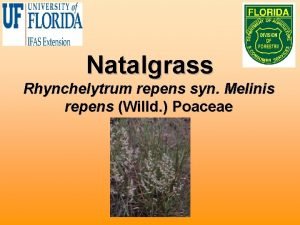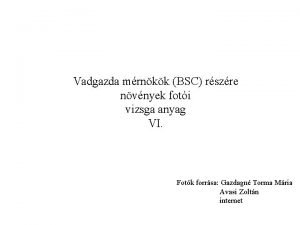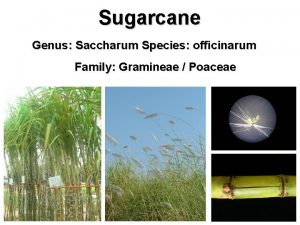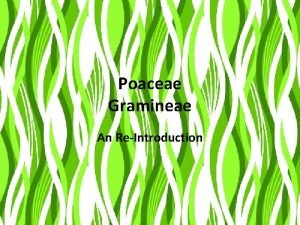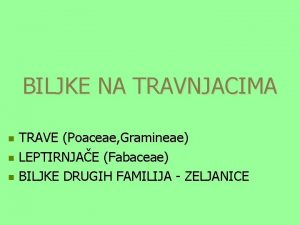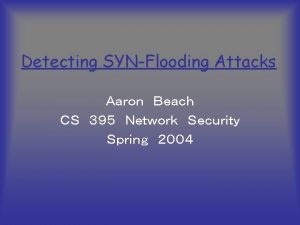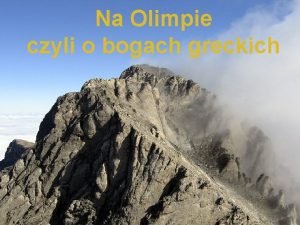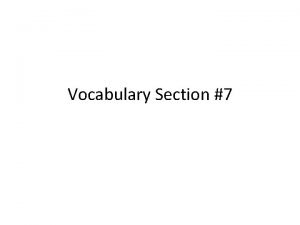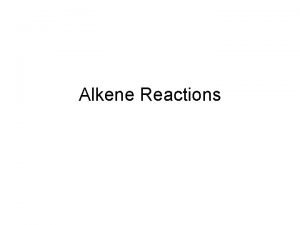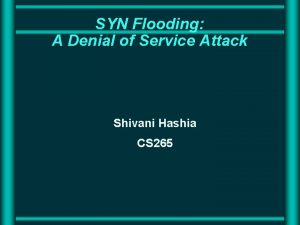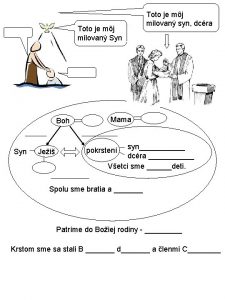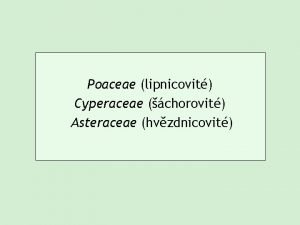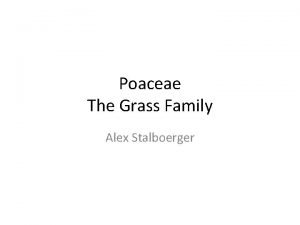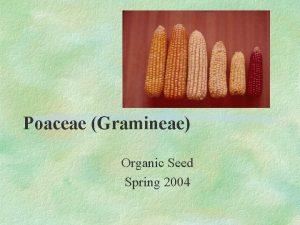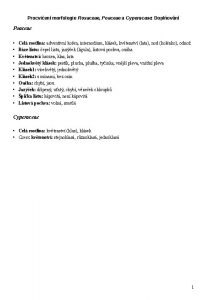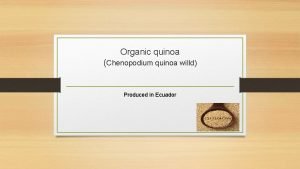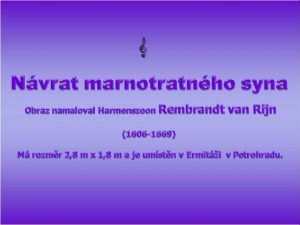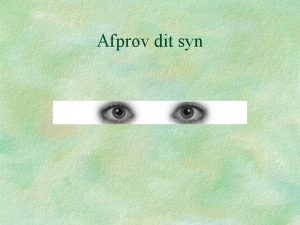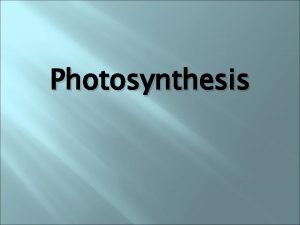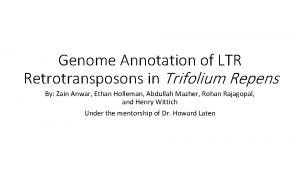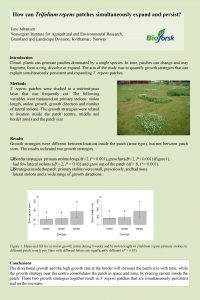Natalgrass Rhynchelytrum repens syn Melinis repens Willd Poaceae



















- Slides: 19

Natalgrass Rhynchelytrum repens syn. Melinis repens (Willd. ) Poaceae

Biology • Native to Africa • Introduced as a forage species in late 1800’s in Florida, but poor quality precluded widespread use • Can be classified as a short-lived perennial grass

Distribution and Impacts • Found throughout much of central and south Florida • Prefers dry soils, waste lands and perennial crops • Readily infests abandoned areas, roadsides, unimproved pastures • Displaces native vegetation, prevents natural succession

Natalgrass Distribution in Florida

Identification

Mature Plant • Perennial grass, 1 to 3 feet tall • Bunch-type grass, branching culms that root at the nodes

Leaves • • • Leave are linear 8 to 12 inches long Grow from erect clumps

Panicle • Flowers are pink-purple, borne in panicles 4 to 8 inches long • Covered with reddish hairs, turning gray/silver with age • Seeds extremely viable, wind-dispersed – major mechanism of spread

Management Preventative Cultural Mechanical Biological Chemical

Preventative 1. Remove existing plants, before seeds are produced 2. Prevent movement of plant material, such as seed contaminated fill dirt, into areas not infested with natalgrass 3. Rouge out plants in abandoned areas

Cultural 1. Programs to educate farmers, ranchers and the general public about the problems associated with natalgrass and proper identification 2. Dense groundcover, native or pasture, will deter the growth of natalgrass seedlings

Biological 1. There are no known biological control agents available for natalgrass management in Florida or the southeastern U. S.

Mechanical 1. Can be removed with repeated, aggressive tillage Ø Limited to open (non-forested) sites Ø Disk several times during season – need to repeat for emerging seedlings from soil seedbank Ø Desiccates plants & exhaust food reserves 2. Burning effective in removing above ground biomass, may enhance chemical control measures – but will not provide control!!

Chemical 1. Broadcast applications for large areas ü Glyphosate at 2 to 4 lbs-ai/A ü Imazapyr at 0. 5 to 1. 0 lbs-ai/A 2. Spot treatment for smaller areas ü Glyphosate – 2 to 3% solution ü Imazapyr – 0. 5 to 1% solution 3. Use surfactant at 0. 25% 4. Adhere to planting restrictions for imazapyr, may cause residual damage

Integrated 1. For best results combine: Ø Burning Ø Tillage (mechanical disturbance) Ø Chemical applications 2. Burn or mow before herbicide application Ø Remove excess thatch and older leaves Ø Initiates regrowth


Useful Links • Floridata Homepage: http: //www. floridata. com/main_fr. cfm? state =Welcome&viewsrc=welcome. htm • University of Florida Center for Aquatic and Invasive Plants: http: //aquat 1. ifas. ufl. edu/welcome. html • University of Florida’s Cooperative Extension Electronic Data Information Source: http: //edis. ifas. ufl. edu/index. html

Useful Links • Pacific Island Ecosystems at Risk (PIER). Plant Threats to Pacific Ecosystems: http: //www. hear. org/pier/threats. htm

Literature Cited Langeland, K. A. and K. Craddock Burks. 1998. Identification and Biology of Non. Native Plants in Florida's Natural Areas. IFAS Publication SP 257. University of Florida, Gainesville. 165 pp
 Rhynchelytrum seeds
Rhynchelytrum seeds Sinkronik berasal dari kata syn dan chronoss. syn artinya
Sinkronik berasal dari kata syn dan chronoss. syn artinya Lolium sp
Lolium sp Grass awns dogs
Grass awns dogs Sugarcane family gramineae
Sugarcane family gramineae Poaceae
Poaceae Poa trivialis biljka
Poa trivialis biljka Flushsyndrom
Flushsyndrom Mitchella repens pregnancy
Mitchella repens pregnancy Rembrandt syn marnotrawny opis
Rembrandt syn marnotrawny opis Syn additie
Syn additie Syn/fin
Syn/fin Bóg winnej latorośli
Bóg winnej latorośli Fraudulent syn
Fraudulent syn Belov syn biblicky
Belov syn biblicky Is acid catalyzed hydration syn or anti
Is acid catalyzed hydration syn or anti Syn cache
Syn cache Scapy syn scan
Scapy syn scan Christian jacq ramzes syn svetla
Christian jacq ramzes syn svetla Toto je môj milovaný syn
Toto je môj milovaný syn
